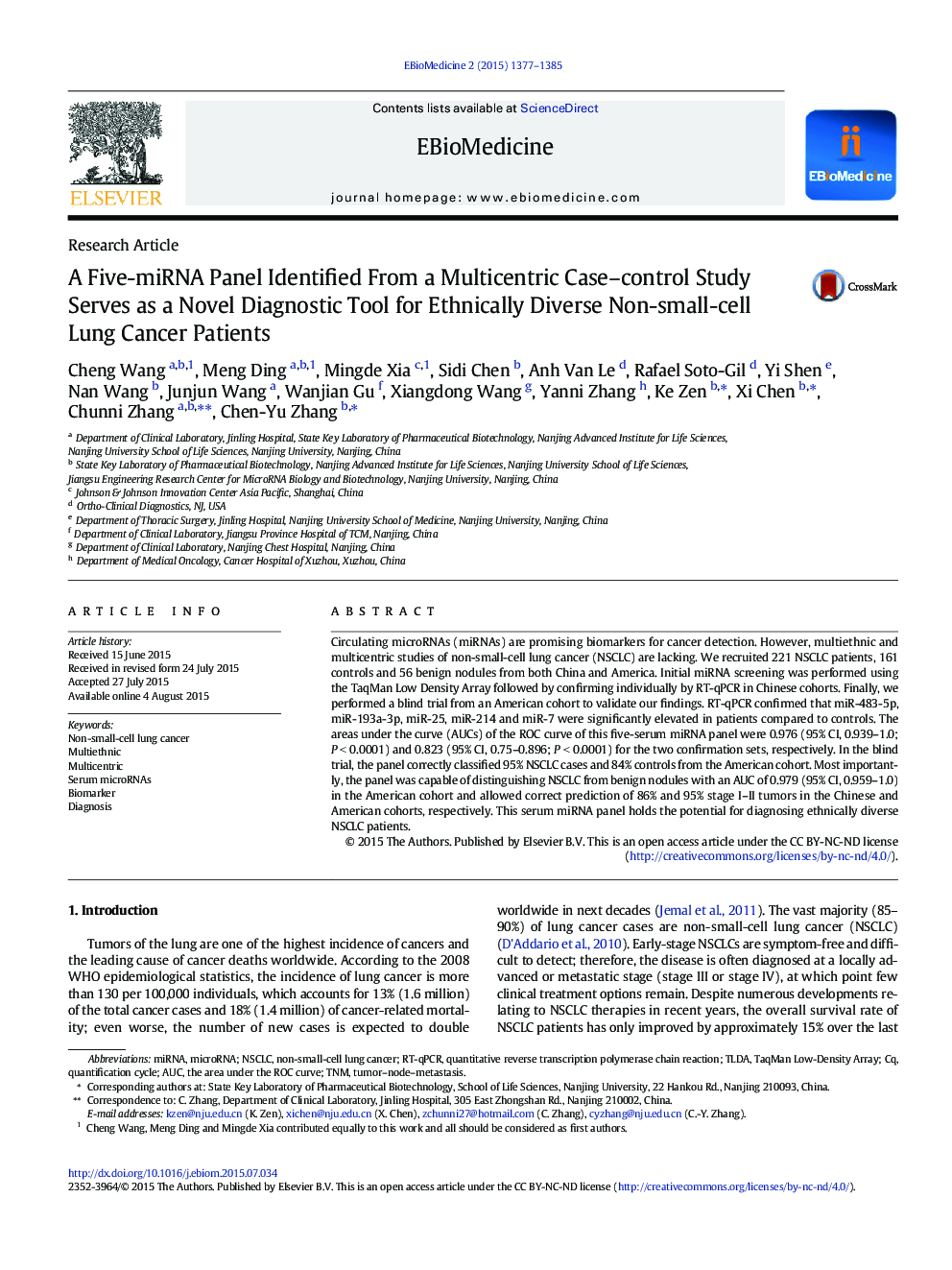| Article ID | Journal | Published Year | Pages | File Type |
|---|---|---|---|---|
| 2121226 | EBioMedicine | 2015 | 9 Pages |
•A multiethnic, multicentric, case–control study was conducted to identify serum miRNA signature for diagnosing NSCLC.•A five-miRNA-based classifier for accurate diagnosis of NSCLC among patients of Chinese and America was constructed.•The five-miRNA panel allowed accurate detection of NSCLC especially stage I–II cases from normal and benign nodule subjects.Wang et al. constructed a five-miRNA-based classifier which provides the potential for accurate diagnosis of NSCLC among patients of Chinese and America from a multiethnic, multicentric, case–control study. More importantly, the five-miRNA panel allowed accurate detection of NSCLC cases especially stage I–II cases from normal and benign nodule subjects. These results suggest that the five-miRNA signature might be a useful biomarker for diagnosing NSCLC in ethnically diverse patients and help discriminate early stage NSCLC from normal and benign nodule subjects, which may benefit personalized therapy of NSCLC patients in the future.
Circulating microRNAs (miRNAs) are promising biomarkers for cancer detection. However, multiethnic and multicentric studies of non-small-cell lung cancer (NSCLC) are lacking. We recruited 221 NSCLC patients, 161 controls and 56 benign nodules from both China and America. Initial miRNA screening was performed using the TaqMan Low Density Array followed by confirming individually by RT-qPCR in Chinese cohorts. Finally, we performed a blind trial from an American cohort to validate our findings. RT-qPCR confirmed that miR-483-5p, miR-193a-3p, miR-25, miR-214 and miR-7 were significantly elevated in patients compared to controls. The areas under the curve (AUCs) of the ROC curve of this five-serum miRNA panel were 0.976 (95% CI, 0.939–1.0; P < 0.0001) and 0.823 (95% CI, 0.75–0.896; P < 0.0001) for the two confirmation sets, respectively. In the blind trial, the panel correctly classified 95% NSCLC cases and 84% controls from the American cohort. Most importantly, the panel was capable of distinguishing NSCLC from benign nodules with an AUC of 0.979 (95% CI, 0.959–1.0) in the American cohort and allowed correct prediction of 86% and 95% stage I–II tumors in the Chinese and American cohorts, respectively. This serum miRNA panel holds the potential for diagnosing ethnically diverse NSCLC patients.
Graphical abstractFigure optionsDownload full-size imageDownload as PowerPoint slide
